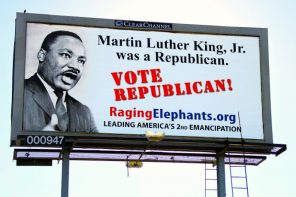I was most struck by one too-clever turn of phrase in the recent Pew Survey of U.S. Jews. The summary read, “believing in Jesus, however, is enough to place one beyond the pale: 60% of U.S. Jews say a person cannot be Jewish if he or she believes Jesus was the messiah.”
As the author and most of the audience no doubt knew, “beyond the pale” originally referred not to the hue of one’s skin but to the pale of settlement where czarist Russia forced Ashkenazi Jews to live between 1791 and 1917.
I am trained as an African American historian, but I know enough Jewish history to know that the pale is the reason why so many Russian Jews like my own ancestors come not from Russia but from Belorussia, Ukraine, Poland, and Lithuania.
But the historical persecution that shaped Ashkenazi Jewry, and subsequently the great majority of Jewish immigration to the United States, South Africa, and elsewhere, was by no means the only or the normative condition that Jews have known in the course of history. In fact, the models of Judaism and Jewishness developed relatively recently in Eastern Europe—the object of much shtetl nostalgia among American Jews—may have shaped Ashkenazi Jewishness to be far more insular, and far more pale, than was the historic norm among Jews in earlier times or other parts of the world.
In other words, it is quite possible that the process that the Pew Report documents of centrifugal forces creating a wide spectrum of American Jewish practice and identity beyond inherited religious forms is not a historical anomaly, but rather closer to a historical norm when Jews have been fortunate enough to live in open societies, from antiquity to the present.
No doubt reflecting the long history of Jewish persecution at the hands of Christians, 60% percent of American Jews draw a thin blue line around one key issue: the divinity of Jesus. But, perhaps more remarkable, 34% do not!
My work documenting the history of African Americans who have adopted variants of Judaism over the last 120 years demonstrates that Jewish identification can change over the course of decades. The “Black Israelite” movements I study began with Holiness Christian churches in the 1890s, with strong influences from Biblical literalism, freemasonry, and Anglo-Israelism, but in the course of only three decades many Israelite movements came to identify not as Christian but as Jewish.
In some cases the children, grandchildren, and great-grandchildren of Israelite pioneers have converted to halachic Judaism, while in others they have not. But a wide variety of Judaic religions, including many of great beauty, have grown up on this continent, and are lived faithfully by people who are seldom recognized as Jews outside of their own communities.
If American Jews realized that Judaic identity covers a broad spectrum of contiguous identities, that groups are moving towards Judaism as well as moving away—even and especially groups that mix Judaism with secularism, Christianity, Hinduism, or Buddhism—we might view the Pew Report with considerably less alarm.
Instead of thinking of this American Jewish polyculturalism as something new or threatening, and vainly seeking to recreate the nostalgic communities and religious institutions made possible in part by the pressures of persecution, Jews might embrace the rainbow spectrum of Jewish practices and Jewish physiognomies emerging in North America, on all sides of the thin blue line.
To truly transcend the pale, and perhaps better align ourselves with historical norms, all Jews might decouple our peoplehood from our racial pasts, sanction patrilineal descent, and recognize the vast and enriching continuum between Jewish and partially Jewish forms of religious practice. If Jews took these steps we might validate and welcome, as Jews-in-process, all of the Jews and near-Jews who are the children, partners, and friends of Jews of all faiths, and all hues.




